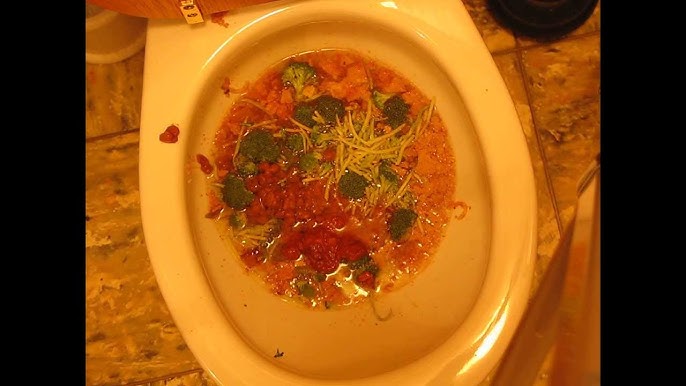Are You Allowed to Flush Food in the Toilet?
Are You Allowed to Flush Food in the Toilet?
Blog Article
They are making a few great annotation on Is it safe to flush food (especially rice) down the toilet? as a whole in the article on the next paragraphs.

Intro
Lots of people are typically confronted with the issue of what to do with food waste, specifically when it comes to leftovers or scraps. One usual concern that emerges is whether it's fine to purge food down the commode. In this short article, we'll explore the reasons why individuals might think about flushing food, the consequences of doing so, and alternative approaches for correct disposal.
Reasons individuals might consider flushing food
Absence of awareness
Some individuals may not know the potential harm brought on by purging food down the toilet. They may wrongly believe that it's a harmless method.
Comfort
Flushing food down the toilet may look like a fast and very easy remedy to taking care of undesirable scraps, especially when there's no neighboring trash bin readily available.
Idleness
In many cases, people might just choose to flush food out of large laziness, without thinking about the consequences of their activities.
Effects of flushing food down the commode
Environmental effect
Food waste that ends up in rivers can add to contamination and harm aquatic communities. Furthermore, the water made use of to flush food can stress water resources.
Plumbing problems
Flushing food can bring about stopped up pipelines and drains pipes, causing costly plumbing repairs and aggravations.
Sorts of food that must not be flushed
Coarse foods
Foods with coarse appearances such as celery or corn husks can get tangled in pipes and trigger obstructions.
Starchy foods
Starchy foods like pasta and rice can take in water and swell, causing clogs in pipelines.
Oils and fats
Greasy foods like bacon or cooking oils should never ever be flushed down the commode as they can strengthen and create clogs.
Proper disposal techniques for food waste
Using a waste disposal unit
For homes equipped with garbage disposals, food scraps can be ground up and flushed with the plumbing system. However, not all foods appropriate for disposal in this fashion.
Recycling
Specific food product packaging products can be reused, reducing waste and minimizing environmental impact.
Composting
Composting is a green way to throw away food waste. Organic materials can be composted and used to enhance soil for horticulture.
The value of correct waste monitoring
Reducing environmental damage
Appropriate waste management methods, such as composting and recycling, aid reduce contamination and preserve natural resources for future generations.
Safeguarding pipes systems
By preventing the technique of flushing food down the toilet, house owners can stop pricey pipes repair work and keep the integrity of their pipes systems.
Conclusion
In conclusion, while it may be appealing to purge food down the toilet for comfort, it is necessary to recognize the potential consequences of this activity. By taking on appropriate waste monitoring methods and disposing of food waste sensibly, individuals can add to much healthier pipes systems and a cleaner environment for all.
THINK TWICE BEFORE FLUSHING FOOD DOWN YOUR TOILET IN FALLBROOK CA
Let’s be honest, we’re really supposed to be tossing rotten or leftover food in the compost bin or trash can. But many people like to place scraps of food down the drain of, say, their kitchen sink. That’s why the garbage disposal was invented: so we can continue to place certain foods down the drain without clogging our drain in the process. Smart.
But not all of us have the luxury of having a garbage disposal installed. So, you might continue to shove food down your sink drain anyway – or worse: you might flush them down your toilet! If you’re guilty of doing the latter, you’re going to want to stop, and here’s why:
Toilet Drains Aren’t Designed to Handle Food!
There’s your answer: food just doesn’t belong in your toilet. It may seem like your toilet drain is wider than the drains of your sinks, but truth be told, that isn’t actually the case. The narrower pipes of your toilet leave your plumbing at risk for clogging if you do happen to flush your food. In addition, food doesn’t break down as quickly that toilet paper and human waste do. In turn, this leaves your toilet at risk for a nasty clog.
Although a flush of a tiny pinch of food every now and then isn’t going to completely damage your toilet, there are certain foods that should absolutely not be flushed in your toilet at all. These include starchy foods like mashed potatoes, grains, hard pieces of food that are slow to break down, and fats and oils.
The latter categories of food are particularly problematic as they may harden, expand as they absorb water, break down slowly in your system, or generally create the perfect obstruction with their gelatinous composition. These are all things you don’t want in your plumbing system!
Experiencing a Toilet Clog?
Nobody’s perfect, and we all make mistakes. Sometimes one of the mistakes people make is flushing food down their toilet and later realizing that it wasn’t the best thing to do once they see that their toilet is now clogged. Uh-oh!

I have been very inquisitive about and I'm hoping you appreciated the page. Are you aware of someone else who is fascinated about the subject? Take a moment to promote it. I thank you for your readership.
Source Report this page